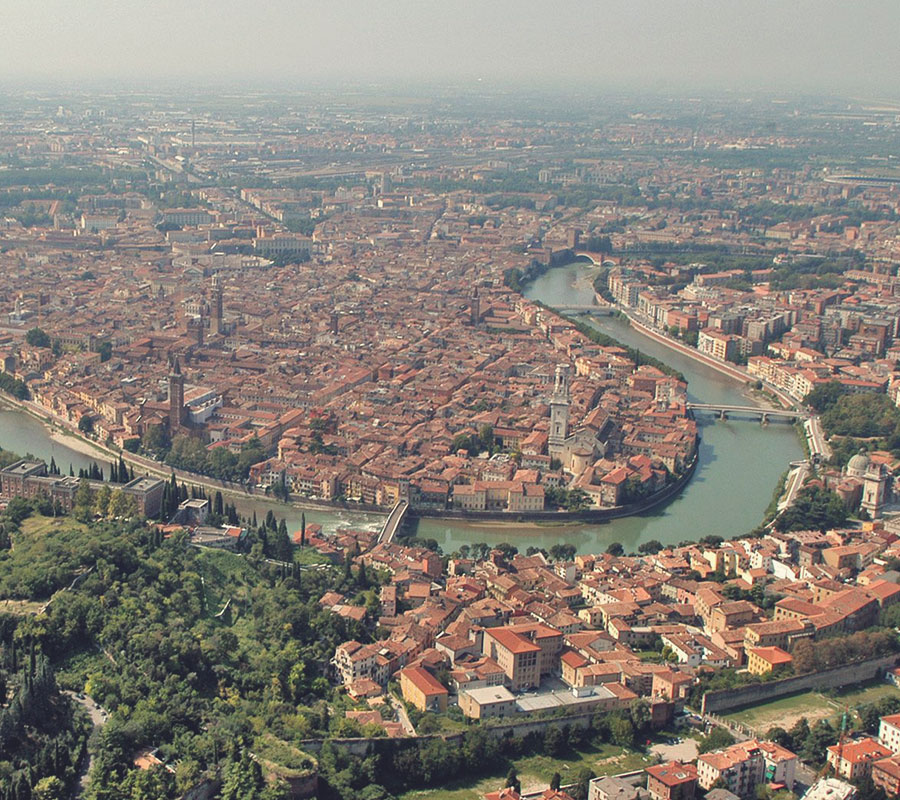
A Romanesque masterpiece par excellence, the Cathedral ot San Zeno is strikingly beautiful due to its perfect proportions and sculpted narrative portal.
San Zeno is the church that most symbolizes Verona, since it is dedicated to the town’s patron saint. An absolute masterpiece of Italian Romanesque, it was founded, or perhaps refounded by Kjng Pipino, between the eighth and ninth centuries, upon the tomb ot the patron saint ot Verona, around which a pre-Christian cult had developed. lts pre sent Romanesque form is mostly due to the modifications made after the earthquake of 1117. The only Gothic part is the apse, which was redone in the end of the 14th century. The façade, in tufo stone, shows a series of mullion windows in red marble.
In the center there is a grand rosone tram the beginning of the 13th century, decorated by six statues, as well as by a portal with protiro, upheld by the two lions. The arch is decorated by animal and plant motives, with sculptures of saints and depictions of the months. In the lunette there is a sculpture of San Zeno. The grandwooden doors are covered with 24 bronze plaques, showing wondertul narrative reliefs: on the left there is the story of the New Testament as well as a mask, on the right there are18 stories from the 0ld Testament, four stories of San Zeno, one depiction of San Michele and another mask. To the right and left of the protiro, one discovers stone reliefs depicting, on the left, the story ot the Genesis and the legend of Theodoric attracted by Hades, and on the right there are scenes showing the lite of Jesus as well as scenes of dueling.
The apse and side walls of the church show typical Verona external wall decoration, which altemates between strips of tufo stone and ter ra-cotta. The interior of the church is composed of a Latin cross with three naves, divided by cruciform pillars, alternating with co/umns decorated by wonderful capitals showing ani mal motifs and corinths deriving from Roman buildings. The church is rich in artworks: there are paintings tram the 13th and 14th centuries as we/1 as sculptures tram the 12th, 13th and 14th centuries, including the famous statue in red marble called
“San Zen che Ride”, or San Zeno Smiling. The most important work is surely the triptych by Andrea Mantegna, which is a northem ltalian Renaissance masterpie ce, and whose subject is the Madonna with Child and Saints. This work was stolen by the French in 1797, however /ater it was recupe rated, but without the predella paintings. The ones we see today are indeed copies dane by Paolo Veronese. On the right-hand side of the church, and not touching it, one finds the belitower which stands 72 m in height.









